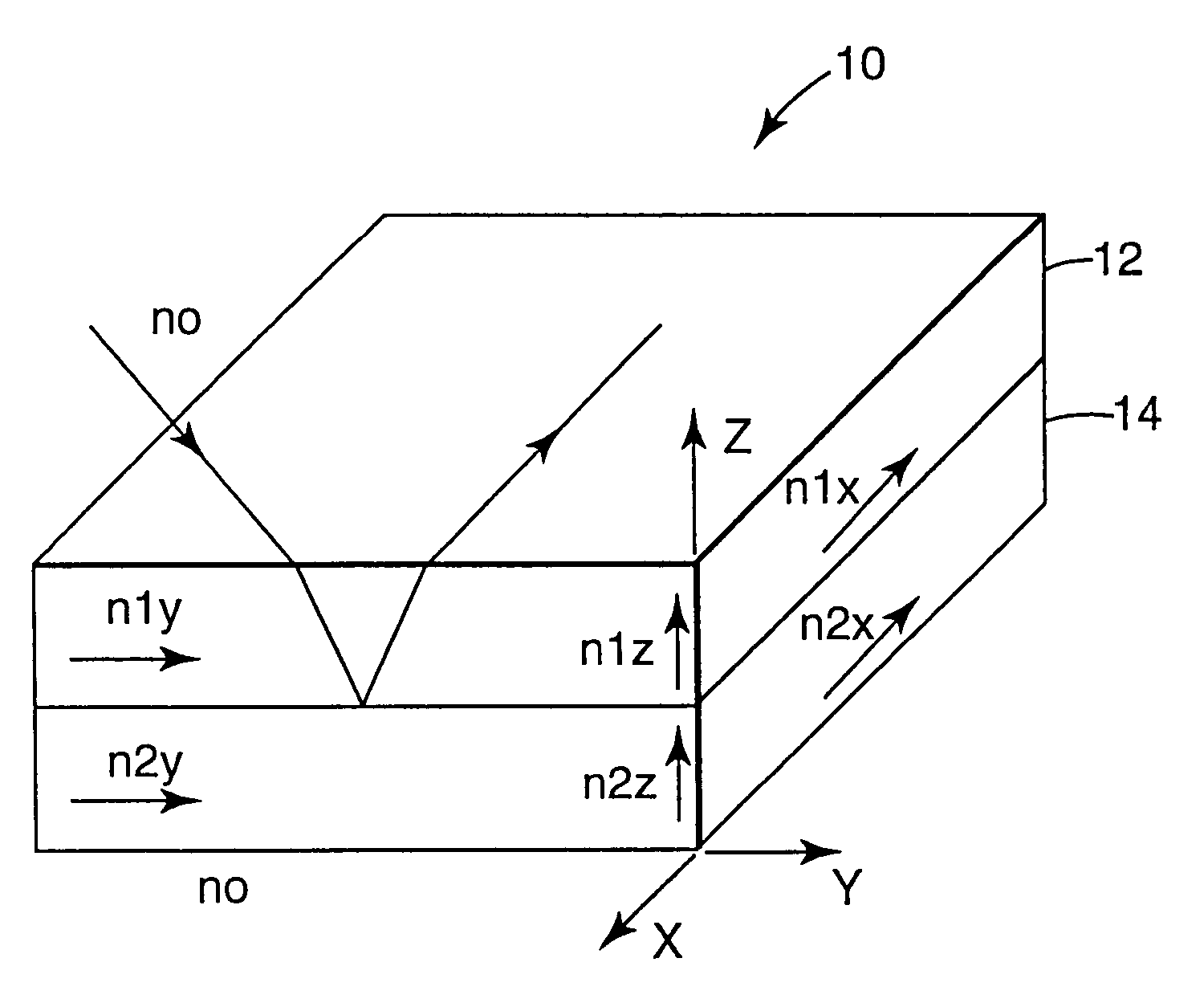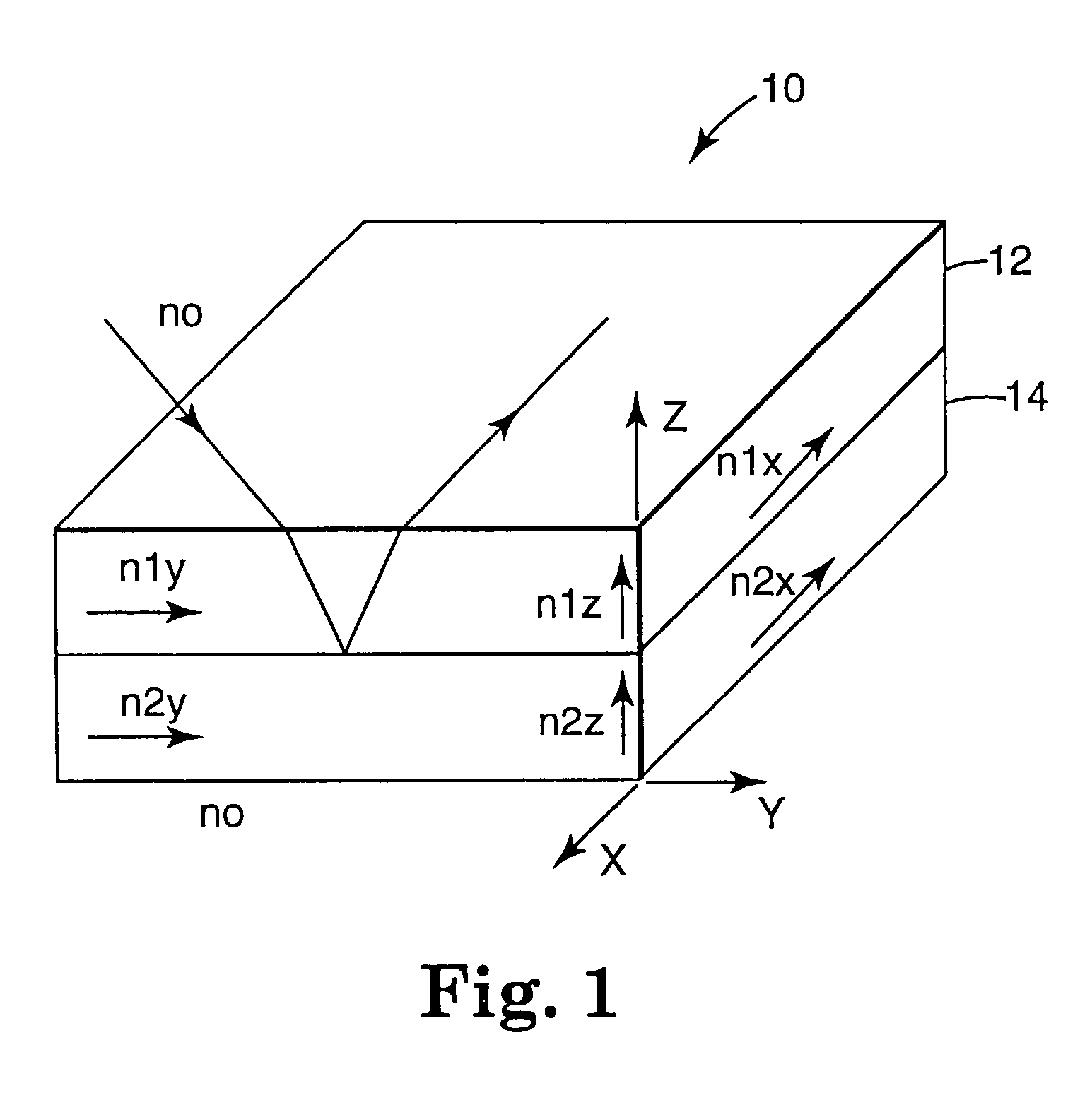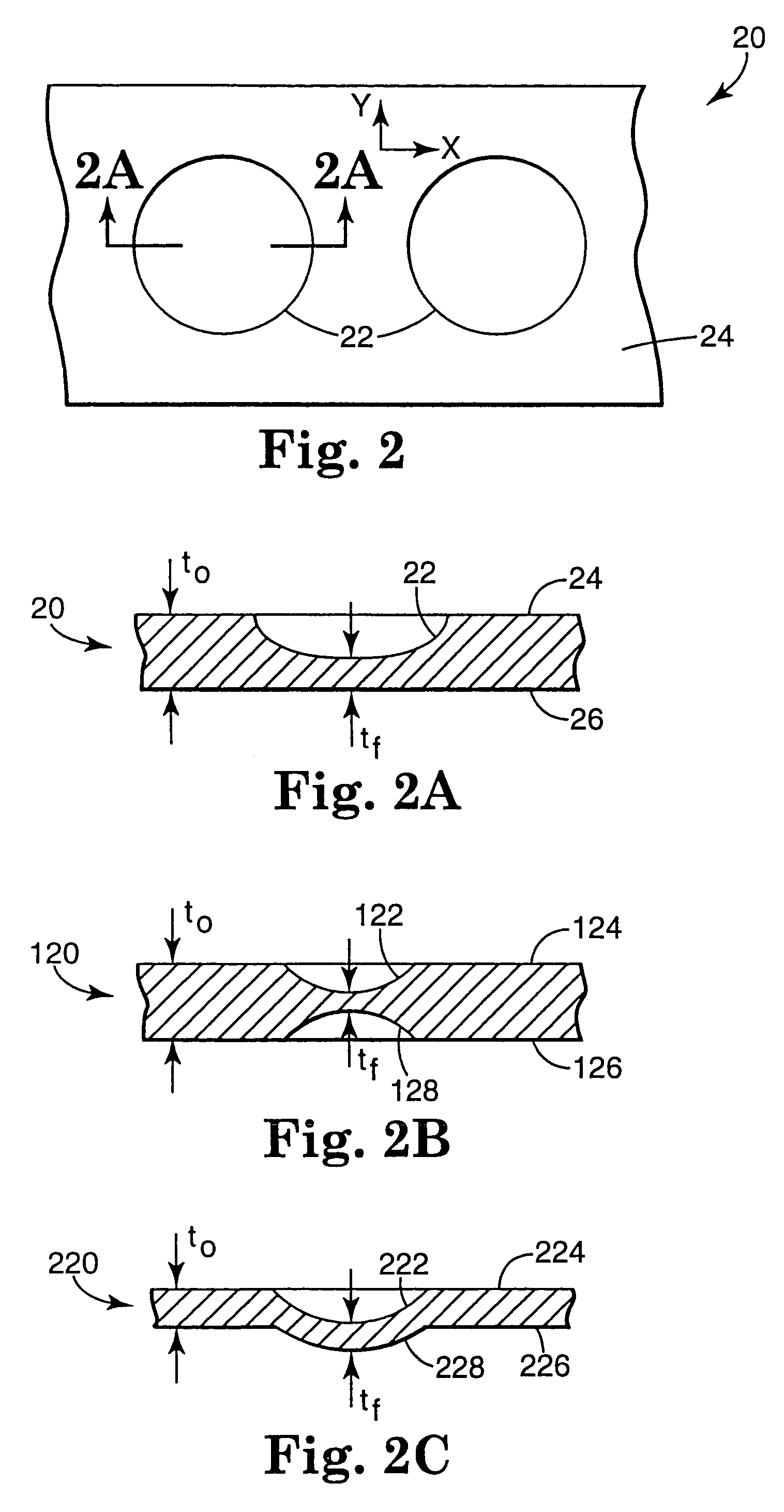Dental articles including post-formable multilayer optical films
a multi-layer optical film and dental article technology, applied in the field of dental articles, can solve the problems of metal coating chipping or flaking, metal coating chipping, and high cost of forming dental articles including reflective optical surfaces completely, and achieve the effects of improving the reflectivity of multi-layer optical films, improving the visibility of dental professionals, and improving the visibility of patients' mouths
- Summary
- Abstract
- Description
- Claims
- Application Information
AI Technical Summary
Benefits of technology
Problems solved by technology
Method used
Image
Examples
example 1
[0240]Example 1 illustrates the use of the multilayer optical film for use as a light guide for dental photo-curing lights. The optical film was rolled into a tube of similar diameter to the lighting end of the Visilux 2™ (3M, St. Paul) dental curing light. The tube was secured with adhesive and placed in flush contact with the external surface of the lighting end of the Visilux 2™. The light output was measured using a Cure Rite visible light meter (Efos Inc., Model 8000) at 120 seconds. As the Visilux 2™ is moved a measured distance away from the surface, the light output dropped significantly as shown in examples C1.2 and C1.3. As shown in example C1.3, at an approximate distance of 4 inches away, the light intensity was very low. In contrast, as shown in Example 1.4, the light intensity at 1 inch was much higher with the multilayer optical film light tube. Even at a distance of 4 inches, Example 1.5, the light intensity as measured by the meter was adequate.
[0241]
TABLE 1LightMul...
example 2
[0242]Example 2 illustrates that the multilayer optical film has a unique ability to act as a UV filter due the presence of a UV absorbing polymer such as PEN. The UV output was measured by placing the tip of the Visilux 2™ dental photo-curing light on the reading surface of a Dynachem UV Integrating Radiometer (Sterling Va.) for 10 seconds. As shown in Table 2, the UV light output of the curing light, which performed within the requirements for dental curing lights, was nonetheless significantly higher in the absence of the UV filter. The efficiency of the filter could be increased by a thicker film or optimizing UV absorbing components in the multilayer optical film. The film based UV multilayer optical film filter could be used to reduce the overall weight of a photo-curing light.
[0243]
TABLE 2DynachemOpticalUV OutputExampleFilter(Joules / cm2C2.1None676.02.2One film485.0layer
example 3
[0244]Example 3 is a trifurcated light guide was vacuum formed from a highly reflective PEN / PMMA multilayer mirror film that was made as described in Example 2 of U.S. patent application Ser. No. 08 / 494,366. A coextruded film containing 601 layers was made on a sequential flat-film-making line via a coextrusion process. Polyethylene Naphthalate (PEN) with an Intrinsic Viscosity of 0.57 dl / g (60 wt. % phenol / 40 wt. % dichlorobenzene) was delivered by extruder A at a rate of 114 pounds per hour with 64 pounds per hour going to the feedblock and the rest going to skin layers described below. PMMA (CP-82 from ICI of Americas) was delivered by extruder B at a rate of 61 pounds per hour with all of it going to the feedblock. PEN was on the skin layers of the feedblock. The feedblock method was used to generate 151 layers using the feedblock such as those described in U.S. Pat. No. 3,801,429, after the feedblock two symmetric skin layers were coextruded using extruder C metering about 30 p...
PUM
 Login to View More
Login to View More Abstract
Description
Claims
Application Information
 Login to View More
Login to View More - R&D
- Intellectual Property
- Life Sciences
- Materials
- Tech Scout
- Unparalleled Data Quality
- Higher Quality Content
- 60% Fewer Hallucinations
Browse by: Latest US Patents, China's latest patents, Technical Efficacy Thesaurus, Application Domain, Technology Topic, Popular Technical Reports.
© 2025 PatSnap. All rights reserved.Legal|Privacy policy|Modern Slavery Act Transparency Statement|Sitemap|About US| Contact US: help@patsnap.com



